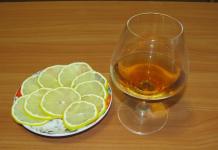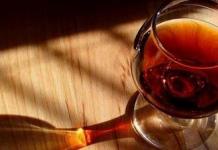Flooring Adhesives
High-quality installation of floor coverings requires adherence to the technology for performing this process and the use of correctly selected adhesive compositions, which are presented in wide range in the consumer market.
It is quite easy for a simple buyer to get lost among this diversity. Knowing important criteria, you can choose an adhesive that will provide reliable fixation flooring and will protect it from swelling and deformation.
Today to everyone building materials, including adhesives, are subject to strict quality and environmental safety. Franklin Int. produces products that do not contain harmful components, are of high quality and have excellent performance properties.
How to determine the quality of glue?
Take our advice into account.
The most important indicator of glue quality is its high adhesive ability. The higher this indicator, the better the glue. In second place is adhesion (sticking force), which ensures the most durable bonding of various materials.
No less important characteristic is the drying time of the adhesive, which must be taken into account when laying floor coverings in rolls.
The drying speed is affected by the composition of the adhesive and the presence of organic or inorganic functional compounds in it.
The quality of the glue can also be judged by its elasticity. That's why elastic adhesives Franklin companies are ideal material for laying floor coverings.
The moisture resistance indicators of the adhesive composition play a big role when it comes to working with them in bathrooms, saunas, swimming pools and other rooms with high humidity.
As for wood flooring, for their installation it is necessary to choose an adhesive that does not contain water. This means that polyurethane glue is ideal for working with wood.
Types and characteristics of adhesives
There are polymer and polymer-cement adhesives for floor coverings.
Using polymer-cement adhesives, tiles, artificial and natural stone. Adhesive cement ensures reliable adhesion of durable and hard materials.
Polymer adhesives are used for laying linoleum, wood, laminate, and carpet. Adhesives of this type have high performance elasticity, strength, resistance to aggressive environments.
In addition to the above compounds, acrylic mixtures and PVA glue, which contain water, are widely used for laying floor coverings. They are characterized by high adhesion and the ability to transmit steam. The presence of liquid rubber in polyurethane mixtures and the absence of water make them universal.
Before you start working with flooring adhesive, you must carefully study all technical specifications and manufacturer’s recommendations, type of material, operating conditions.
If the chosen glue is suitable, then you can start working. If you encounter difficulties when choosing an adhesive composition, it is better to seek help from a consultant.
Where to buy quality flooring adhesive?
Our company Vector offers high-quality adhesives from famous manufacturer Franklin. In the catalog presented on our website, you can familiarize yourself with the range of products offered.
We offer favorable terms of cooperation: affordable prices, prompt delivery, convenient payment. By phone you can contact us, get a free consultation and place an order. Call!
Flooring adhesives from Franklin Int. created for those who care about the quality of fixation of materials. Parquet, linoleum, carpet, plywood, chipboard, MDF and other coatings will be securely fixed and will retain their properties for a long time original appearance, thanks to a variety of unique adhesives from Franklin Int.
Flooring adhesives from Franklin Int. are produced without solvents, which ensures safety for environment, and a wide range of products meets the needs of professionals at all stages of installation and repair work: both drafts and elite finishers. Our specialists will help you choose the required adhesive taking into account the properties of the floor covering.
Titebond® II Premium Wood Glue.

[ Click on photo
to enlarge ]
The American company Franklin International has been supplying the world market with a line of wood adhesives for more than 70 years. Constant research activities and the introduction of the latest technologies allow us to produce high-quality professional carpentry, restoration, parquet and other adhesives. The company now produces more than 25 types of wood adhesives for industrial applications under the Titebond brand.
The most common on Russian market are universal one-component moisture resistant adhesives For Titebond wood ii in blue packaging and moisture resistant transparent with black labels.
Technologies
Parquet adhesive - how to choose
Despite appearing on modern market new floor finishing materials, parquet is still not losing its popularity. It’s so nice to walk on the floor and feel natural natural wood
Universal second adhesives - review
Secondary adhesives are one-component cyanoacrylates. They are characterized by a short setting time, excellent heat and cold resistance
Carpenter's glue for wood. Description and Application
Bone or hide wood glue is sold in the form of granules. It may also have the appearance of grains or scales, this does not have special significance for quality wood glue
Some of the most popular adhesives on the modern Russian market are those manufactured under the Titebond brand. They have unsurpassed moisture resistance qualities and can have a transparent or creamy structure. For more than 70 years, the American company Franklin International has been supplying the world market with a wide range of adhesives that are designed for gluing different types of wood.
Active research activities made it possible to introduce the most modern technologies production and produce high-quality wood glues that are intended for professional use. With their help you can easily install parquet board in residential and office premises, restore old coatings that have failed, and carry out a fairly wide range of work.
Today in the assortment you can find more than 25 varieties of adhesives for industrial use, which have the Titebond brand. The most common among domestic consumers are one-component universal moisture-repellent wood adhesives, which must be worked with at positive temperatures. If done correctly preparatory work, thoroughly clean the surfaces of the products to be glued, and also keep them under pressure for a certain time, then you will be able to achieve the promised positive result, having received a durable adhesive seam with moisture-repellent qualities.
Characteristics of Titebond II Premium Wood Glue
Titebond glue, which you can distinguish by the designation II Premium Wood Glue, is sold in blue packaging and is a moisture-resistant composition that meets stringent American standards for water resistance. It is used for gluing hard and soft wood. In carpentry, you can make surface and butt joints, as well as glue paper film, laminate, veneer, chipboard, MDF, fiberboard and plywood.

This composition is used in furniture production, providing the most durable setting even with short pressing times. You will be able to obtain greater bonding strength, which is even higher compared to the wood itself.
Physical properties of Titebond II
Titebond II glue has an amount of 48%, viscosity is 4000 mPa*s. Professionals and home craftsmen may be interested in such an indicator as acidity. For the described adhesive mixture it is 3 pH. In its original packaging, the glue can be stored for 24 months at a temperature of +20 °C. The composition can be used at a minimum temperature of +12 °C. For 1 m2 it will take approximately 180 g.
Additional features of Titebond Premium
Titebond II Premium adhesive is resistant to high temperatures, solvents and acoustic vibrations. This composition is a polyaliphatic emulsion with strong cross-links. Products after gluing can be used over a wide range of temperatures, which vary from -30 to +50 °C. After drying, the composition forms a film that has a transparent creamy tint.

Instructions for use
Titebond II adhesive should only be used in positive temperatures. Before gluing, the surfaces of products should be cleaned of oils, dirt, dust and grease, as well as other substances that would interfere with adhesion. It is necessary to free the surface from old paint. Before use, the glue is mixed, and its drying time can vary from 10 to 20 minutes. During this period, excess composition must be removed with a damp rag, and after drying, the glue can only be removed mechanically. Even after freezing, the composition will remain stable, but may change structure, becoming slightly viscous.
For reference
The one described for wood is not abrasive and is not capable of damaging the surface of cutting tools after processing products. You should remember the toxicity of the composition, which indicates the need for use by a master individual funds protection.

Glue composition
Titebond glue may have different basis used in production. Ingredients may include aliphatic resin, polyurethanes, polymers, proteins and water.
What else you need to know about Titebond wood glue
Titebond wood glue is characterized by indestructible cross-links, which create a stable chemical viscosity of the mixture. After drying, the layer is resistant to freezing, but it is worth remembering that it is flammable at a temperature of 100 ° C.
The composition adheres to surfaces instantly and firmly; the products only need to be pressed for some time. Titebond is resistant to elevated temperatures and solvents, and is easily removed before drying. The only drawback is the inability to use glue on surfaces that are wetted with water.

Characteristics of Titebond III glue
Titebond wood glue comes in another variety, designated III. This polymeric water-dispersion composition is supplied in packages of different volumes for the convenience of the consumer and is intended for gluing veneer, fiberboard, plywood, wood, plastic, chipboard and MDF. The composition can be used for interior and exterior work, which makes it universal. The adhesive is water-resistant and can perfectly join laminated veneer, plastic and other above-mentioned materials. Application can be done using hot or cold methods, the composition is non-toxic and has no solvents. It can be used even at low temperatures.
Instructions for using Titebond 3 glue
Titebond 3 adhesive can be used at a minimum temperature of +8 °C. Approximately 190 g of composition will be needed per 1 m2. Within 10-20 minutes you can change the position of the part, which will depend on external conditions. Before applying the adhesive, surfaces should be checked for moisture and cleaned of dirt, loose material and other materials that could reduce the intensity of adhesion. It is noteworthy that this Titebond wood glue can be used for gluing products that will come into contact with food during operation. It is not recommended for use on underwater connections.

The composition is allowed to be used only in intensively ventilated areas, and if it comes into contact with the skin, the mixture may cause irritation. If you experience dizziness and unpleasant effects, you should immediately go to fresh air and if necessary, consult a doctor. If Titebond glue gets into your eyes, rinse them for 15 minutes running water. If it happens that glue gets on the skin, you should remove it and wash the area with soapy water. The viscosity of the composition is 4200 mPa*s. Dry residue is 52%, density is 1.1 kg/l, acidity is 2.5 pH.
Conclusion
According to experts, Titebond adhesive is the only one-component composition that meets the ANSY TYPE II standard for moisture resistance. You can purchase Titebond iii in conveniently sized packaging that holds from 1 to 20 kg. If you need a small amount of glue, you will not have to overpay. Since it is intended for professional use, you can be sure that you will receive the most high quality. For example, if you have not dealt with veneering before, then the composition described will allow you to cope with the work quite simply.
The only one-component adhesive that meets the most stringent ANSY TYPE II standard for moisture resistance
- Provides strong initial set and short pressing times
- Ensures the strength of the adhesive joint is higher than the strength of the wood itself
- Non-abrasive: does not spoil cutting tools during final processing
- High resistance to heat and solvents
- Resistant to acoustic vibrations
- Remove with a damp cloth before drying
Physical properties
- Base: cross-linked polyaliphatic emulsion
- Condition: viscous liquid
- Color: cream, after drying translucent cream
- Dry residue: 48%
- Viscosity: 4000 mPa*s
- Acidity ph: 3
- Flash point: 100°C
- Freeze resistance: stable
- Shelf life: 24 months in original packaging at 20°C
- Moisture resistance class: D3
Directions for use
- Application temperature:+ 12°C
- Operating temperature:-30...+50°С
- Consumption: 180 g/m2
- Working hours: 10-20 minutes depending on conditions.
Working surfaces must be dry, free from oils, grease, dirt, loose old paint and any other materials that reduce adhesion - Cleaning: clean with water before drying. After drying, excess is removed mechanically
Peculiarities
- Freezing does not change the structure of the glue, but leads to its thickening
- After long-term storage, mix the adhesive thoroughly before use to restore its properties.
- Meets the requirements of ASTM C557 (USA) and AFG-01 D3498 of the American Plywood Association, DIN EN204 D3
Use for underwater connections
Precautions
Use only in well-ventilated areas. May cause skin irritation. If dizziness or other unpleasant effects occur, you should go out into fresh air and consult a doctor. If glue gets into your eyes, rinse them with running water for 15 minutes. If glue gets on your skin, wipe it off and wash your skin with soapy water.
Keep the glue out of the reach of children!
Use only for its intended purpose.
Packing
Store and transport at t > 5°C.
Wood glue is a specific multicomponent mixture with increased gluten. This feature of the composition allows you to firmly and reliably connect different surfaces and objects, since the percentage of adhesion of such a mass is extremely high.
Wood glue is a special type of adhesive product and is intended for working with wooden objects and surfaces, as well as materials based on wood. The main component is protein substances that firmly glue any planes. This quality is especially appreciated by customers who need quick and effective results.
Types of wood glue
There is a wide range of grades of wood glue, including common brands and exclusive ones.
A sought-after and at the same time rare product is hide glue. Its main source is animal skin trimmings, rich in flesh, unique biological substance, giving the glue elasticity and instant absorption.
The most common type of wood glue in the world is bone glue. And the lovers restoration work They prefer fish glue, which provides strong and quick bonding.
Casein glue, which comes in the form of a brown-yellow powder, is also in demand. It is designed for working with paper; in particular, casein glue is ideal for gluing wallpaper.
Our range
The Vector company presents a wide range of adhesives for wood and furniture production with different working hours, viscosity, minimum application temperature.
Our consultants will provide you with information about each of the adhesive varieties presented in our catalogue. detailed information. We will help you navigate the range of products and choose the right one based on cost and purpose. Since glue intended for working with stone or ceramics will be ineffective when in contact with wooden objects. To avoid such situations, you must carefully read the information about the product, scope of application, or use the services of our consultants.
We have developed a system of additional discounts for regular customers.


















